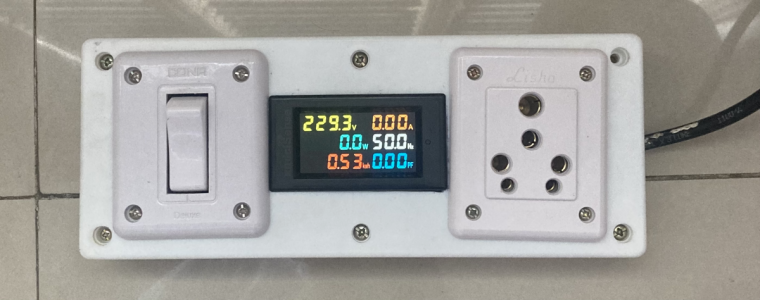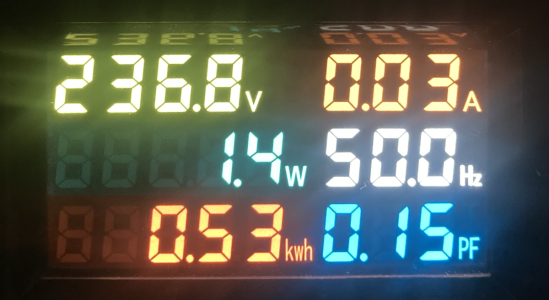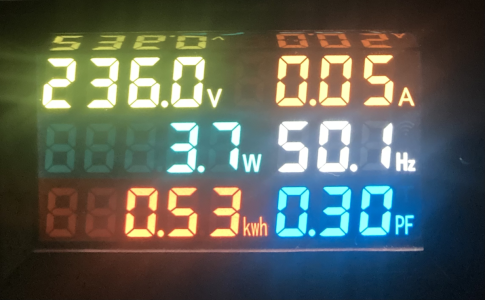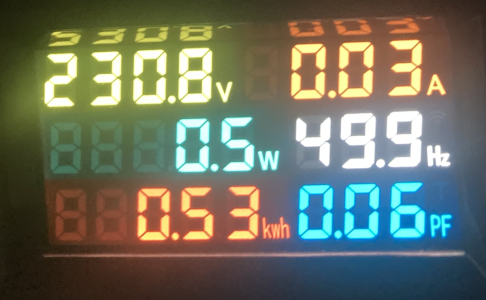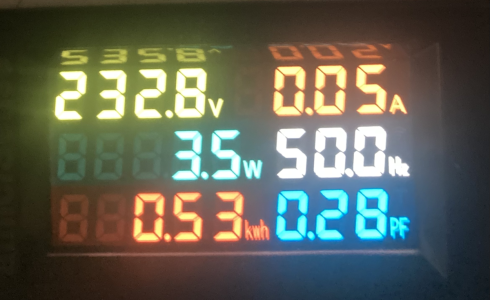I had the chance to listen to two budget class-D amplifiers, namely the Aiyima A07 and the Fosi BT20A Pro. I'd like to share my thoughts and experiences with these amplifiers, with the hope that it might assist someone who's trying to decide between the two. While I don't claim to be a seasoned audiophile and haven't had the opportunity to audition numerous other amplifiers, I can certainly provide a comparative analysis of these two models.
View attachment 80362
Getting Started
The Fosi Audio BT20A Pro and Aiyima A07 are compact Class D stereo amplifiers, driven by the Texas Instruments TPA3255 chip. They both come with relatively large DC adaptors. The BT20A Pro is accompanied by a 32V 5A adaptor, while the A07 ships with a 36V 6A adaptor. Additionally, the BT20A Pro offers Bluetooth 5.0 connectivity and incorporates tone controls, features that the A07 lacks.
Exterior Design and Appearance
The BT20A Pro's panel design caters to those who appreciate vibrant colors. Its distinctive orange aluminum knob stands out as a striking contrast. However, if your audio setup predominantly features black components, the BT20A Pro's appearance might not blend seamlessly. On the other hand, the A07 boasts a classic black panel that appeals to individuals with more traditional tastes.
Now, about its size. The BT20A pro is a bit on the compact side, especially when compared to the Aiyima A07. But honestly, I'm not entirely convinced that compactness is a major advantage when it comes to amplifiers, at least not in terms of usability. Personally, I'm someone who appreciates a beefier volume knob. The BT20A Pro, with its eye-catching orange knob, does look fantastic, but it's a bit too small for my liking. And let's not forget, they've got those two tone control knobs to fit in there too, making for quite a crowded space.
View attachment 80363
One gripe I have is that these knobs lack any markings for minimum or maximum limits. The tone control knobs are nicely centered at the 12 o'clock position, which is great. But here's where it gets tricky – if you assume the same scale for the volume knob, you're in for a surprise. Nope, the 50% volume setting is at 2 o'clock on the knob, not the expected 12 o'clock. A bit more intuitive marking would have been a welcome addition.
Comparatively, the Aiyima A07, without the tone controls, offers a more spacious front panel with ample space for a comfortably-sized volume knob, complete with clear markings indicating the minimum and maximum limits.
Shifting our focus to the rear panels of both amplifiers, you'll find they both feature standard RCA connectors for input as well as a 3.5mm AUX port that can serve as both input and output. Additionally, they come equipped with two sets of compact speaker binding posts. I would suggest opting for banana plugs when connecting your speakers since dealing with bare wires can be a bit tricky due to the closely placed terminals.
The Aux port provides the flexibility to connect to a powered subwoofer or another amplifier, making it suitable for setting up a separate audio zone. Now, here's where they differ: with the A07, the Aux out functions as a pure bypass. It allows the signal to pass through even if the amplifier is in standby mode. However, please note that there's no volume control for the pre-out on the A07.
On the other hand, the BT20A Pro offers a pre-out with volume control. This means that it's not just a simple bypass; you can adjust the volume. This feature can be quite advantageous for multi-zone audio setups, as you can control the volume for the 2nd zone using the BT20A Pro. Interestingly, when you switch off the BT20A Pro amplifier, the volume controls on the pre-out are bypassed as well.
Lastly, concerning the DC input, both amplifiers can handle a voltage range of 24V to 48V, allowing you to use a compatible adapter within this range depending on how much juice you need for your setup.
Sound Quality
When it comes to sound quality, both amplifiers truly shines, offering an impressive audio experience considering its affordable price point. It delivers clean and detailed sound with a warm signature that suits a wide range of music genres.
To compare its sound quality with the Aiyima A07, I conducted an A/B test using a DIY connector to switch between both amplifiers connected to my Elac Debut B2.6 speakers. The source was an SMSL D6 DAC. It's worth noting that this setup isn't perfect because the Aiyima A07 came with a 36V 6A DC adapter, while the BT20A Pro had a 32V 5A adapter. To level the playing field, I adjusted the Aiyima A07's volume to 50% and the BT20A Pro's to around 75% until they sounded equally loud.
View attachment 80365View attachment 80366
I even swapped the DC adapters between the amplifiers (with appropriate volume adjustments), and the results remained consistent. In blind A/B testing, the sound from both amplifiers was indistinguishable. However, there was a subtle difference in bass response with the BT20A Pro, which seemed slightly more pronounced compared to the Aiyima A07. I ensured that the tone control knobs were set to neutral positions. It's unclear whether this increase in bass was due to a minor discrepancy in the detents or if the original recording itself contained that extra bass, which the Aiyima A07 wasn't reproducing. This difference was noticeable only during the A/B testing setup, and during normal listening, it's hardly discernible.
Tone Controls on the Fosi BT20A
Now, I know in the audiophile world, some folks frown upon the very idea of having tone controls. But personally, I think having the option to fine-tune your treble and bass is a good thing.
The tone control knobs come with these neat little neutral detents, which are essentially these handy midpoint markers. Setting them to a neutral position is a breeze, and the feedback you get from these detents is pretty satisfying.
And now, the important part – do the tone controls actually work? Yes, they do, and they work well. Cranking up the bass by about 50% really does make a noticeable difference. I mean, you can practically feel the air whooshing out of those speaker ports. If you're into movie nights with some seriously beefed-up bass, this feature is right up your alley.
Now, when we turn our attention to the Aiyima A07, it takes a different approach. You won't find any tone controls here. If you're the kind of listener who believes in experiencing music exactly as the producer intended, this might strike a chord with you. After all, in the budget class, most people aren't obsessing over these details. It all comes down to personal preference, and both amplifiers cater to different tastes in this regard.
Bluetooth on the BT20A Pro
The Bluetooth connectivity is quite convenient, providing reliable performance even at distances of up to 30 feet. However, there's a minor quirk when it comes to Bluetooth functionality. When the amplifier is in pairing mode, it emits a subtle ticking sound through the speakers. This sound is only audible when you're in close proximity to the speakers and actively listening for it.
Additionally, the Bluetooth input takes precedence over the RCA connectors. If a previously paired Bluetooth device comes within range, the input automatically switches to Bluetooth mode. You'll notice this switch when the red LED indicator turns blue, indicating a Bluetooth connection.
To unpair a device, you'll need to perform a long press on the volume knob. However, I found that this long press lasts longer than 5 seconds, which might be a bit cumbersome. Shortening it to around 3 seconds could make the unpairing process more intuitive and efficient.
It is compatible with Bluetooth 5.0, but I would have preferred support for the latest Bluetooth codecs such as aptX and LDAC.
Heating
During a visit to a friend's place, I had the opportunity to experience the heat dissipation from a Class AB amplifier. It was almost like those amplifiers could double up as a stovetop for slow cooking! However, these Class D amplifiers are an entirely different story. I've run them for extended periods, sometimes exceeding 4 hours, at 50% volume, and they remained only slightly warm to the touch.
DC Adaptor Grounding Issue
An interesting point to note is that even though these adaptors have a 3-pin plug that connects to the socket, they only have 2 pins on the adaptor itself. This can result in a slight electrical tingling sensation when touching the amplifier. This "ground leak" issue can manifest as a faint hissing sound when the amplifiers are connected to speakers.
View attachment 80367
A simple solution to this problem is to run an external wire to establish a proper ground connection. In my setup, I utilized an empty coaxial socket on my external DAC to run a wire to the socket's ground. Once this is done, the slight hiss disappears.
Conclusion
For those contemplating between the Aiyima A07 and the Fosi Audio BT20A Pro, it's clear that both offer similar sound quality. Your choice should primarily depend on your specific needs. If you're in search of a straightforward power amplifier, the Aiyima A07 is the way to go. However, if you desire additional features like tone controls and Bluetooth connectivity, then the Fosi Audio BT20A Pro is the obvious choice. Additionally, the volume-controlled pre-out on the BT20A Pro is a valuable feature for multi-zone audio setups.
If you happen to possess either of these amplifiers, I'd love to hear your thoughts and comments regarding their performance.


